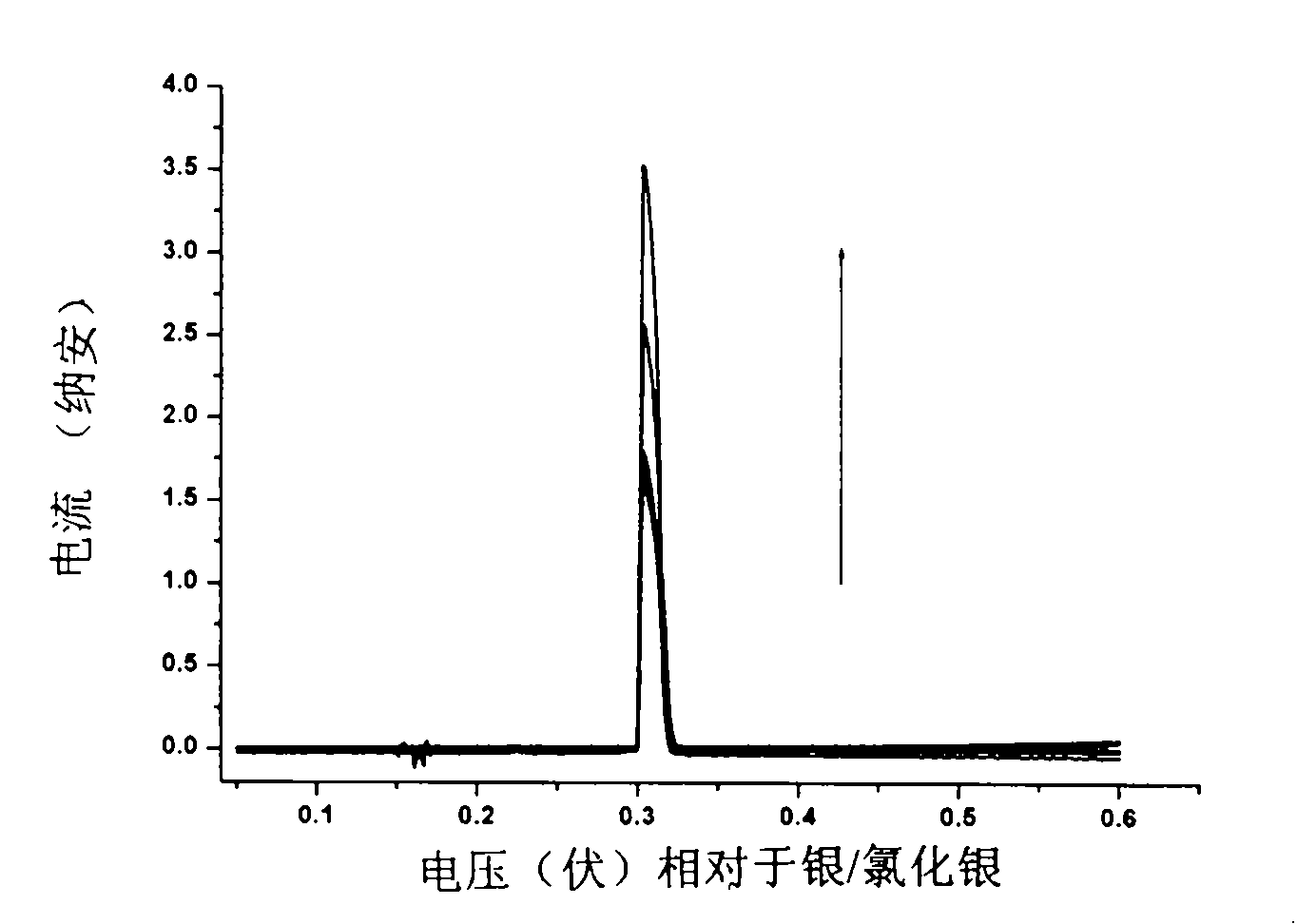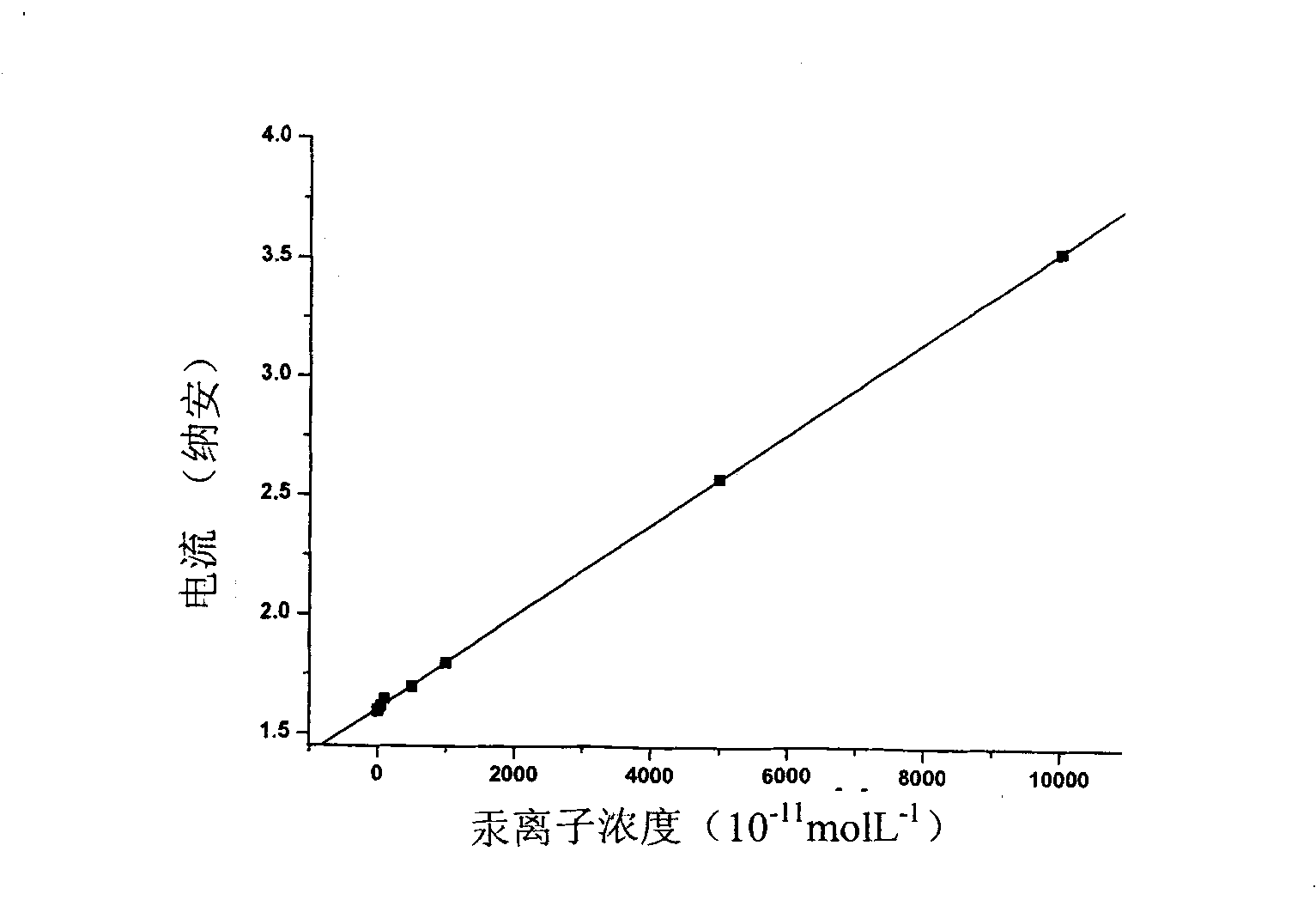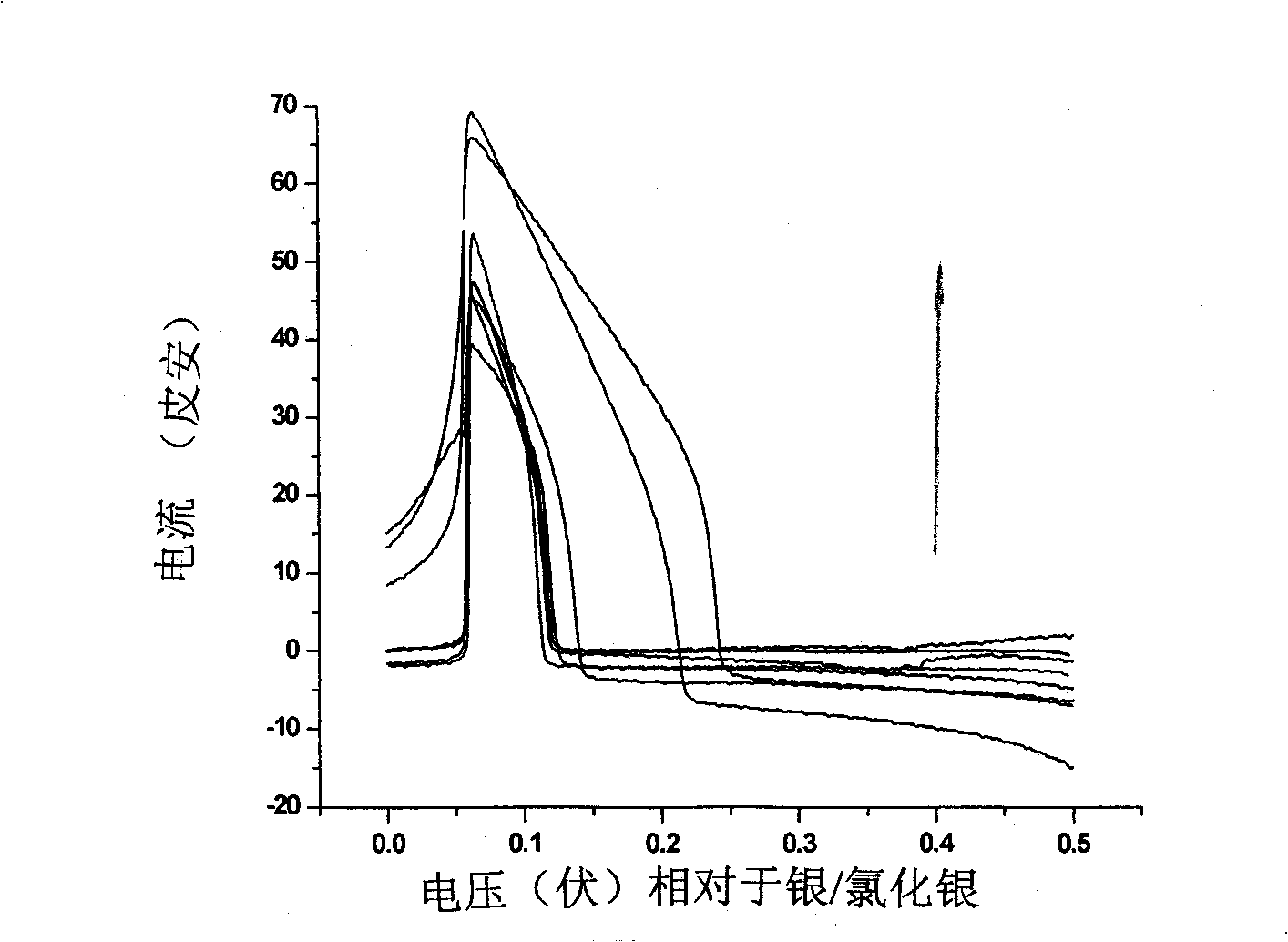Method for detecting trace amount mercury ion by platinum microelectrode and reference electrode
A reference electrode and mercury ion technology, applied in the direction of material electrochemical variables, etc., can solve the problems of high cost of inductively coupled plasma mass spectrometry, unsuitable for routine analysis, expensive instruments, etc., achieve good selective detection effect, reduce impurities Scattered and correlated interference, high sensitivity effect
- Summary
- Abstract
- Description
- Claims
- Application Information
AI Technical Summary
Problems solved by technology
Method used
Image
Examples
Embodiment 1
[0019] Example 1 (preparation and treatment of electrodes)
[0020] (1), the instruments and reagents used in this example
[0021] Scanning electrochemical microscope (CHI900, CH Instruments, USA) was used for anodic voltammetry experiments, Ag / AgCl reference electrode (CHI111, CH Instruments, USA), quartz tube heated automatic double pure water distiller (1810B, Shanghai Asia Pacific) Technical Glass Company) for the distillation of doubly distilled water. Electronic balance (Beijing Sartorius Instrument Co., Ltd.) for weighing medicines. ML-902 magnetic stirrer (Shanghai Pujiang Analytical Instrument Factory) aluminum oxide polishing powder (0.30μm, 0.05μm, Shanghai Chenhua Instrument Reagent Co., Ltd.) is used to process platinum microelectrodes, Ag / AgCl is the reference electrode, Hg 2+ Concentration of standard solution 10 -4 mol.L, Cu 2+ Concentration of standard solution 10 -4 mol.L, potassium nitrate (Xi'an Chemical Reagent Factory).
[0022] (2) Preparation of ...
Embodiment 2
[0030] Embodiment 2 (interference experiment of copper ion)
[0031] containing equal concentrations of Hg 2+ , Cu 2+ 1×10 -7 mol.L -1 ~5×10 -11 mol.L -1 The solution was charged with nitrogen and deoxygenated for 30min, deposited with a voltage of 0V for 15s under stirring by a magnetic stirrer, and then the two electrodes were taken out and placed in a 0.1mol.L deoxygenated solution. -1 In potassium nitrate solution, the potential range is 0.0~0.6V and the sweep speed is 0.01V.s -1 linear scan. Figure 4 It is the dissolution voltammetry curve (ASV) after mixing the two ions: curves 1, 2, 3, 4, and 5 are the concentration of 1 × 10 -7 mol.L -1, 1 × 10 -8 mol.L -1 , 1 × 10 -9 mol.L -1 , 1 × 10 -10 mol.L -1 , 1 × 10 -11 mol.L -1 Hg 2+ , Cu 2+ Dissolution voltammetry curves of mixed solutions of standard solutions. at 10 -7 mol.L -1 ~10 -11 mol.L -1 The anodic peak of mercury ions is obvious at around 0.30V, while the anodic peak of copper ions is almost ...
Embodiment 3
[0032] Example 3 (test)
[0033] With the working curve obtained in Example 1, replace Hg with the sample to be tested (the laboratory tap water sample of this unit) 2+ In the standard solution, the anodic dissolution peak current was measured according to the method of Example 1, and the mercury content was calculated from the D Zuo curve at 3.2 × 10 -8 mol.L -1 the following.
PUM
| Property | Measurement | Unit |
|---|---|---|
| radius | aaaaa | aaaaa |
Abstract
Description
Claims
Application Information
 Login to View More
Login to View More - R&D
- Intellectual Property
- Life Sciences
- Materials
- Tech Scout
- Unparalleled Data Quality
- Higher Quality Content
- 60% Fewer Hallucinations
Browse by: Latest US Patents, China's latest patents, Technical Efficacy Thesaurus, Application Domain, Technology Topic, Popular Technical Reports.
© 2025 PatSnap. All rights reserved.Legal|Privacy policy|Modern Slavery Act Transparency Statement|Sitemap|About US| Contact US: help@patsnap.com



